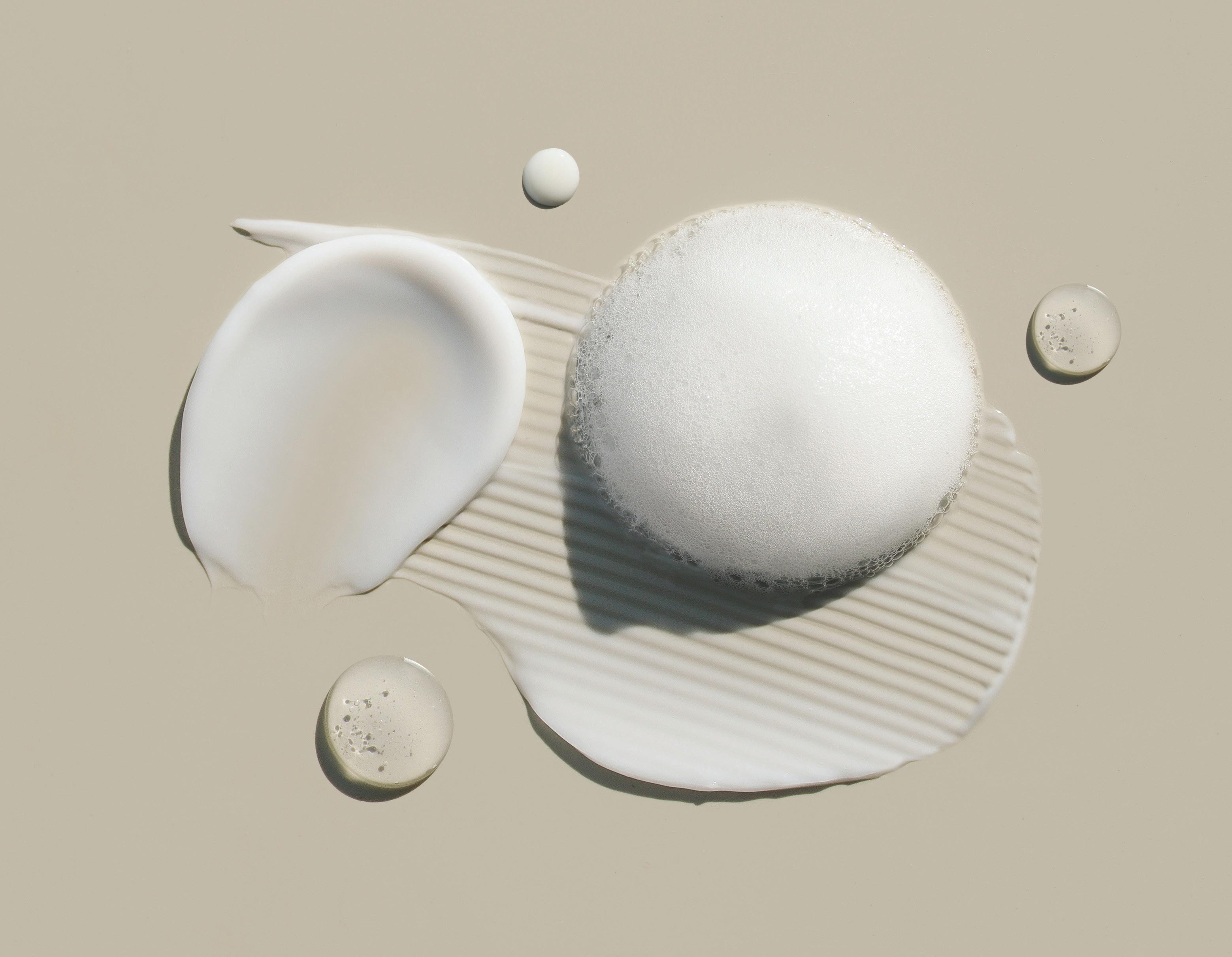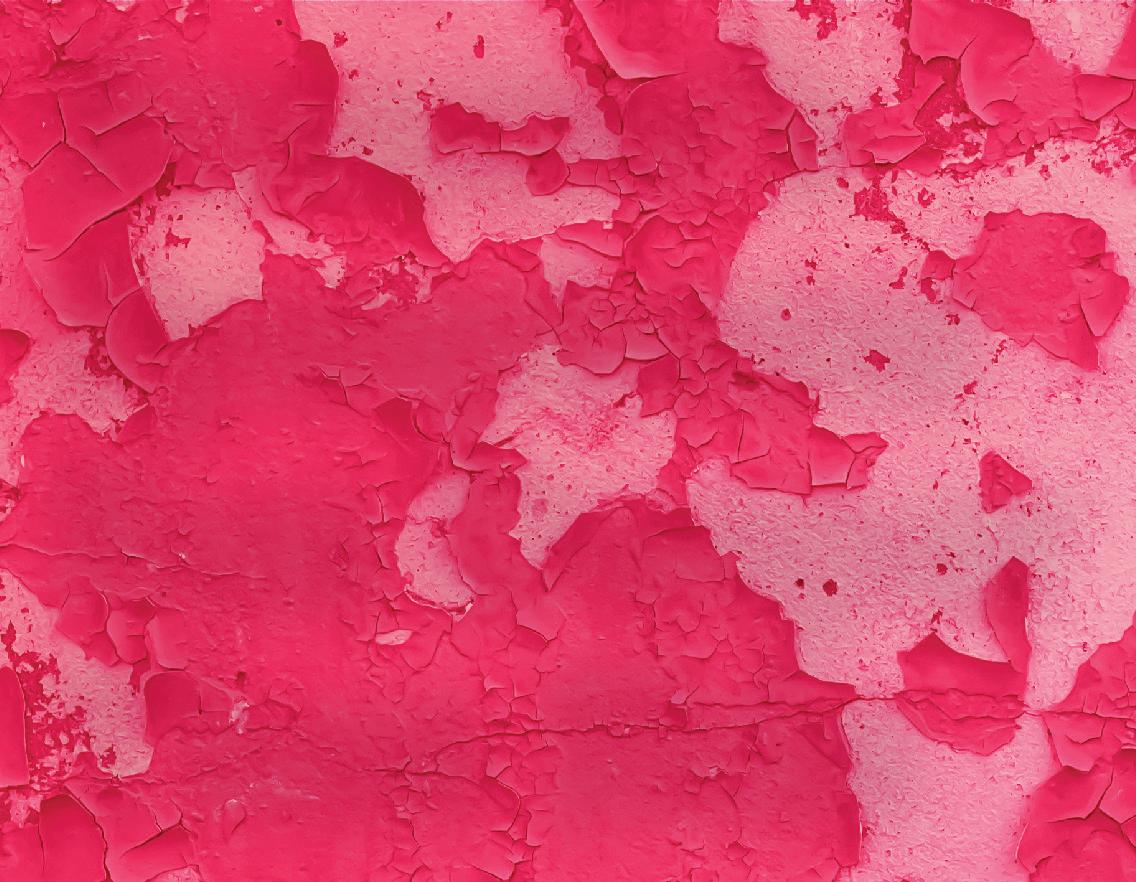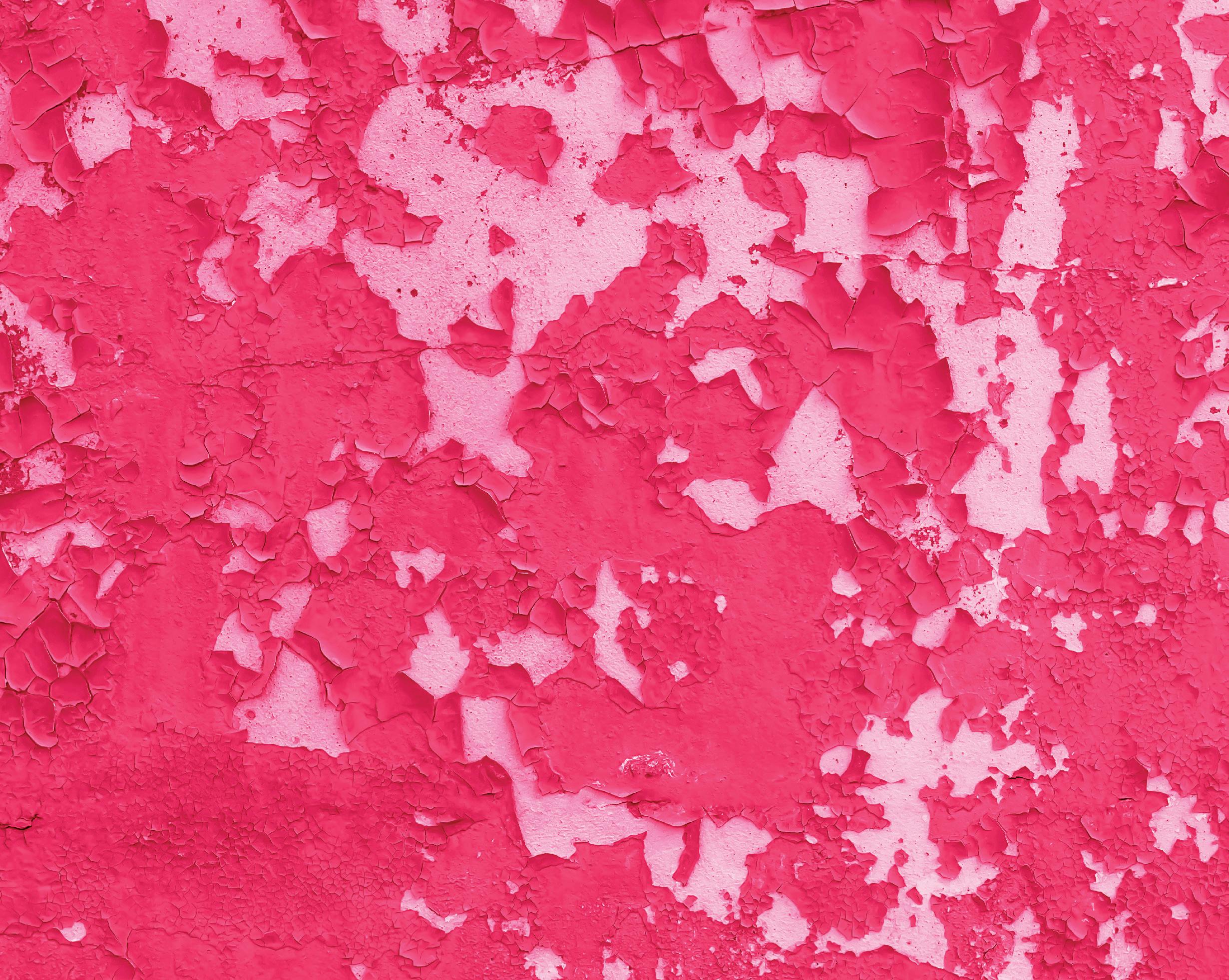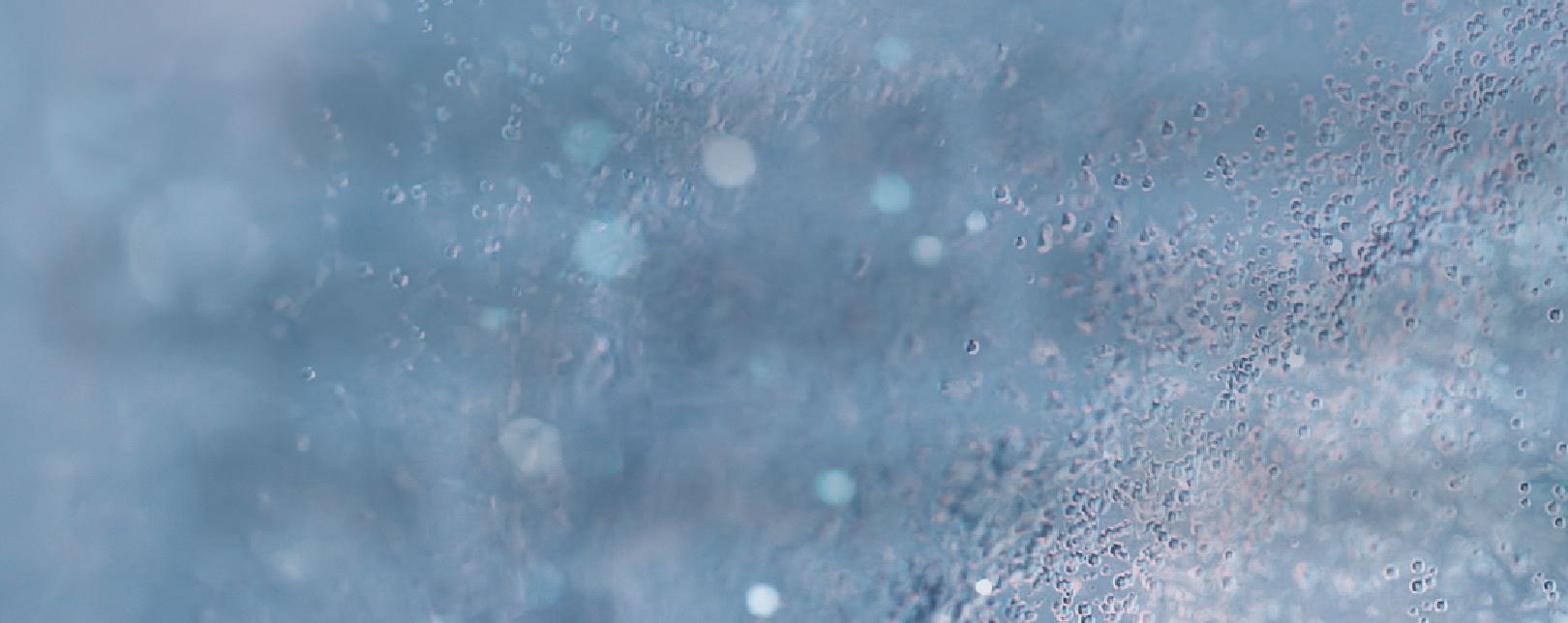Skin Health

Learn how to protect, soothe, and medicate your skin against winter’s damaging e�fects

Bio-Oil® blends plant extracts and vitamins to help improve the appearance of stretch marks 05
Reality star Scheana Shay shares her story of postpartum hair loss 09
DECEMBER 2022 | FUTUREOFPERSONALHEALTH.COM
A Mediaplanet Guide to Caring for Winter Skin An Independent Supplement by Mediaplanet to LA Times
Eczema affects roughly 10% of Americans. The symptoms can vary, from mild skin irritation to large patches of dry or discolored skin, yet even mild forms of eczema can impact one’s life.
“When my skin was at its lowest point, it seemed as if my life revolved around my eczema,” said Morelia Chavez, who has lived with eczema for much of her life. “My eczema would dictate the clothes and shoes I couldn’t wear, the activities I couldn’t participate in, and also brought a lack of self-confidence due to my appearance.”
Raelle Brown, who also lives with eczema, said, “Waking up daily, you can only hope that there is nothing that you ate, touched, or were even surrounded by that has caused you to have a reaction. When my skin is at its worst, eczema flares take over my ability to properly function physically, mentally, and emotionally.”
Addressing eczema in children
For adults, eczema can negatively affect work and self-confidence. For children, it can cause sleep disturbance and lead to being bullied. There are many ways in which eczema can impact one’s life beyond one’s skin.




Dermatologists like Dr. Latanya Benjamin work closely with patients to not only diagnose and treat eczema, but also to raise awareness about the psychological impacts of the condition. “I am always on the lookout for signs of inflammation in the skin, such as redness and itch,” Dr. Benjamin said. “The best skincare options that are the safest are products that hydrate and contain no fragrances, dyes, sulfates, parabens, formaldehyde, or other harsh chemicals.”
Dr. Benjamin highlighted how eczema in children can be particularly impactful. “Healthy skin is important at any age,” she said. ”However, young child and infant skin is most susceptible to damage from a variety of factors (such as the sun and chemicals in topical products), and these damages could carry great implications. I recommend effective cleaning of the skin with a gentle baby wash. I will layer on topical medications if the condition is moderate to severe and warrants additional treatment.”
A range of at-home treatments
Depending on the severity of a flare-up, treatments range from stress management and avoiding irritants to topical medicines.
“Staying diligent with my skincare regimen by

Eczema’s Symptoms Run Deeper Than Skin
ensuring that I’m using products that don’t irritate my skin has helped with my eczema management,” Brown said. “Identifying triggers has been key for managing my eczema flare-ups, and I’ve been able to do that by being patch and allergy tested to know what makes me flare.”
Chavez found steroidal creams and prescription ointment effective in treating her flare-ups. “I apply a generous amount to the area, and I wrap it with plastic wrap and leave it for at least three to four hours,” she said. “At first, it can be super painful because the prescription ointment and the plastic can feel uncomfortable, but when this
happens, I apply ice packs to the area to relieve some of the pain.”
Jim Hewlett, who also lives with eczema, found a combination of treatments effective. “The treatments that have been most successful for me include a biweekly injectable biologic, shorter and colder showers, stress-reduction techniques, and a daily skin lotion regimen,” he said.
Looking at lifestyle habits
While treatments are often necessary, reducing stress and changing certain lifestyle habits can help prevent flare-ups.
“A healthy diet and lifestyle that minimizes stress will positively impact the health of your skin,” Dr. Benjamin said. ”Especially for children, sufficient sleep is also key for proper growth and skin health.”
The impact of successful eczema treatments doesn’t stop with healthier skin. “After my treatments, my skin feels better, but I’ve come to realize that my skin can also dictate my mood,” Brown said. “After successful treatments, I’m at my happiest. Consequently, my quality of life has improved significantly as well.” n
READ MORE AT FUTUREOFPERSONALHEALTH.COM 2
Content
Publisher Joanna Tronina Business Developer Joanna Tronina Managing Director Julia Colavecchia Director of
and
Production
Joelle Hernandez Lead Editor Dustin Brennan Lead Designer Kayla Mendez
@MEDIAPLANETUSA @FUTUREOFPERSONALHEALTH INQUIRIES: US.EDITORIAL@MEDIAPLANET.COM AND US.ADVERTISE@MEDIAPLANET.COM PLEASE RECYCLE Without information on effective treatments, eczema can not only be harmful for skin, but also for self-confidence.
Copy Editor Amara Hartman Designer Julia Goldberg All photos are credited to Getty Images unless otherwise specified. This section was created by Mediaplanet and did not involve LA Times.
Ross Elliott
It’s time to bring equity to baby skincare.
So we captured more than 2,000 images of what eczema looks like on BIPOC infants—to help parents help their babies.
Because every baby deserves to be comfortable in their own skin. aveeno.com/baby *https://nationaleczema.org/blog/eczema-in-skin-of-color/

Aveeno® Baby Eczema Therapy products are formulated with colloidal oatmeal–clinically shown to relieve and help prevent dry, itchy skin due to eczema.
1.7x
Black babies are more likely to develop eczema than white babies.* But they have been underrepresented in the skincare category. We wanted to change that.
The Bio-Oil ® Products That Will Help Improve the Look of Stretch Marks
As you start organizing your baby’s cold-weather gear, don’t forget to change their skincare routine, too. The dryness of winter weather can cause sensitive baby skin to get dry and rashy, making those comfy clothes a little less snuggly.
Here are my expert tips for healthy baby skin during the winter.
Baby skin is unique
A Pediatrician’s Top Tips for Winter Baby Skincare
Bio Oil ® Original Skincare Oil is a one-of-a-kind, multi-use skincare oil that helps to improve the appearance of scars, stretch marks, and uneven skin tone while nourishing, healing, and hydrating the skin. Available for purchase at Amazon.com





https://www.amazon.com/Bio-Oil-200ml-MultiuseSkincare-6-7oz/dp/B00AREGVUM?ref_=ast_sto_dp
There’s a reason your baby’s skin is so irresistible. From birth, a baby’s soft, supple skin has the miraculous ability to protect from infection and injury. Infant skin is water-dense and highly absorptive. However, during the first few months of life, the skin is rapidly developing and changing.
Biological changes make baby skin more durable and adult-like over time. The skin’s outer layer becomes more acidic as oils and sweat start to float on the skin surface. Critical to skin function, this acidity helps the body fight microorganisms and prevent chronic disease. A baby skincare plan should support these important transitions.
Bathing your baby
Fleecy sleep sacks, baby-sized sweaters, tiny furry boots. Are you getting your baby ready for winter?
environment exposed to waste and debris. Best care means frequent diaper changes with gentle and effective wiping.
Eczema and sensitive skin
Bio Oil ® Natural Skincare Oil is a 100% natural version of its best-selling stretch mark and scar treatment oil. The all-natural product matches the performance of the original Bio-Oil® Skincare Oil. It is clinically proven to help improve the appearance of scars and stretch marks, and is uniquely formulated to also help uneven skin tone, and aging and dehydrated skin. Available for purchase at Amazon.com
https://www.amazon.com/Bio-Oil-SkincareStretchmarks-Moisturizer-Sunflower/ dp/B08XMPKJ1L?ref_=ast_sto_dp
Quick, warm baths two to three times per week are enough to hydrate the skin and keep your baby clean. Use a soft washcloth with a fragrance-free, liquid-based mild detergent during the bath. Soapfree products are preferred since they don’t contain harsh surfactants that disrupt the outer skin layer or cause skin irritation.
Seal in the moisture from the bathwater by finishing the routine with a head-to-toe application of fragrance-free lotion or emollient. Warm the emollient to body temperature before an application to make this step even more comfortable.
Care for the derriere
The goal for diaper skincare is to keep the area clean and protected. The diaper area is a warm, humid
Commercially available disposable diapers do an excellent job of wicking away wetness from the skin and help to prevent diaper rash. Cloth diapers do not have this wicking ability and can increase the risk of rash. In addition to a good diaper, choose a wipe that effectively cleans without using harsh ingredients. Numerous clinical studies have demonstrated that modern baby wipes are superior for cleaning the diaper area compared to cloth and water.
Even with the best care, diaper rash can occur. When this happens, do your best to keep the area clean. Schedule frequent diaper changes and add in some helpful diaper-free time. While the skin is healing, be sure to frequently apply a thick, protective layer of zincbased diaper cream or petroleum jelly to keep the irritated skin protected from additional chemicals or microorganisms that can make the rash worse.
Winter is an especially difficult season for infants with eczema. Eczema, or atopic dermatitis, is one of the most common chronic skin conditions of childhood.
The most effective way to care for eczema-prone and sensitive skin is with hydration. If your baby’s skin can stay hydrated, it will be less likely to break down and become uncomfortable. Frequent application of emollients limits moisture loss and helps maintain a healthy skin pH. Especially in the winter, it’s not uncommon for some babies to need a full-body application of emollient as much as four times per day to stay hydrated.
If your baby has eczema or sensitive skin, choose lotions and emollients without added fragrance. Although many baby products have intoxicating scents that parents love, these additives are not necessary for baby skin. At worst, they may directly irritate the skin or cause skin damage.

When eczema flares If your baby develops a stubborn
patch of red, itchy skin, don’t be hard on yourself. It’s normal for babies with eczema to have good days and bad days.
When eczema flare-ups occur, increase the frequency with which you apply emollients. Dry skin absorbs moisture quickly, so be sure to give it enough. In addition to moisture, over-the-counter hydrocortisone cream is a safe and effective way to manage itch and redness. Apply the medicated cream first, then apply a moisture layer on top. Use hydrocortisone treatments two times per day or as directed by your child’s doctor.
As the skin heals, be sure to avoid any soaps or unnecessary ingredients in baby skincare products. Look for products that are clinically tested and recognized by U.S. organizations.
Enjoy this winter season and all the coziness it has to offer. As always, if you have specific questions about caring for your baby, talk with a trusted healthcare provider. n
READ MORE AT FUTUREOFPERSONALHEALTH.COM 4
ADVERTORIAL
Natasha Burgert, M.D., FAAP
Improving the Look of Stretch Marks During and After Pregnancy
While stretch marks may fade over time, they never fully go away. But one skincare product — Bio-Oil®, a combination of plant extracts and vitamins is formulated to help improve the appearance of stretch marks. It may help reduce the possibility of stretch marks forming during pregnancy and help improve the appearance of existing stretch marks.
“Prevention is the best way to avoid stretch marks during pregnancy,” said Dr. Tiffany J. Libby, M.D., director of Mohs micrographic and dermatologic surgery for Brown Dermatology. “BioOil is a fantastic emollient and moisturizer – it is safe to use before, during and after pregnancy. I enjoyed using Bio-Oil Skincare Oil during, in between, and throughout my pregnancies. While much of what determines whether one will get stretch marks or not is due to genetics, prevention and keeping skin hydrated and supple is key to minimizing one’s risk of developing them. BioOil will hydrate and soften skin and can be used on Day 1 of your pregnancy. You can use the oils to massage your pregnant belly and the non-greasy formula makes it convenient and easy to use.”
The multi-use skincare product, which is formulated to be light and nongreasy, contains the proprietary ingredient PurCellin Oil™. “The breakthrough ingredient changes the consistency of the product, making the oil lighter and non-greasy,” Dr. Libby said. “This helps Bio-Oil absorb into the skin, promoting its elasticity, texture, and tone.”
The key ingredient acts as an emollient, helping soften aging and dehydrated skin. The product, which also
contains vitamin A, vitamin E, lavender oil, calendula oil, rosemary oil, and chamomile oil, contains no preservatives and is suitable for all skin types.
Clinically proven Bio-Oil® has been deemed safe for use, including in pregnancy. It’s also clinically proven to help improve the appearance of scars, stretch marks, and uneven skin tone. In an 8-week clinical trial conducted by proDERM Institute for Applied Dermatological Research, 100% of subjects who applied Bio-Oil® twice daily for eight weeks showed an improvement in the appearance of existing stretch marks.

Stretch marks, those indented streaks on the skin that can be pink, red, or other colors, often occur while a woman is pregnant.
Between 43% and 88% of women develop stretch marks during their pregnancy. While they are particularly common during pregnancy, rapid weight gain or loss can cause stretch marks to form as well.
“Bio-Oil skincare oils are safe for use by pregnant and lactating women, and it can be used from the start of the first trial semester until after birth, and on an ongoing basis, and is 100% safe for use on the body while breastfeeding,” Dr. Libby said.
Recommended use for Bio-Oil® during pregnancy is to apply to areas that are prone to stretch marks, such as breasts, abdomen, hips, thighs, buttocks, and lower back. Following pregnancy, apply Bio-Oil® to the affected area two times a day for at least three months.
Hydration and improved appearance According to Dr. Libby, in addition to
stretch marks, pregnant and postpartum women often experience melasma, linea nigra, acne, spider veins, varicose veins, and dryness.
When it comes to stretch marks and dryness “women have traditionally managed these issues by keeping skin well moisturized to try and prevent stretch marks and overall skin dryness during pregnancy,” Dr. Libby said.

She recommends Bio-Oil® Original Skincare Oil and Bio-Oil® Natural Skincare Oil. The main difference between the natural formula and the original oil lies in the ingredients: Bio-Oil® Original uses a mix of mineral oil and PurCellin Oil ™ as its base, whereas Natural is
fragrance-free and has a 100% natural base of plant oils, including soybean, sunflower seed, and safflower. It also contains specialist and essential oils such as jojoba, chia, pomegranate, inca seed, lavender, and rosemary. Both keep skin hydrated and improve the appearance of stretch marks. n
Bio-Oil ® is available for purchase at Amazon.com
5 MEDIAPLANET
Kristen Castillo
SPONSORED
Three Tips for Year-Round Sun Safety
Sun protection is crucial for the prevention of skin cancer and early signs of aging. Dr. Vince Bertucci, president of the American Society for Dermatologic Surgery, explains simple daily, monthly, and annual sun-safe tactics.

Simple sun-safe behaviors can have a big impact for living in healthy skin. Did you know skin cancer is the most common cancer in the United States, yet is easier to prevent and detect than most? Follow these three tips to protect yourself:
1 Apply sunscreen daily
It may look like a dreary day, but that does not stop damaging UV light from penetrating through clouds and most windows. In fact, brief sun exposures throughout the years can add up to significant damage. Sunscreen is best applied to all visible skin 15-30
minutes prior to sun exposure. Many people do not apply enough sunscreen (use a shot glass-sized amount for your body and one tablespoon for your face) or forget to reapply it every two hours, especially after sweating or swimming.
Be sure to read the instructions on the bottle or ask your dermatologist if you’re unsure how to apply it correctly. Using sunscreen can reduce the accumulation of chronic UV damage that is linked to non-melanoma skin cancer and early signs of aging. Today’s sunscreen is available in all different types (e.g., lotion, spray, powder) and formulations, having greatly
improved over the thick and greasy substance you may remember.
2 Reduce sun exposure
Avoid being outside during the peak sun hours of 10 a.m. to 4 p.m. when you are most susceptible to damaging UV rays. Seek shade when you can from a tree, umbrella, tent, or building structure. If the sun is unavoidable, consider wearing sun-protective clothing, such as sunglasses, wide-brimmed hats, or Ultraviolet Protection Factor (UPF)-rated clothing that block the sun’s harmful rays, even when you’re in the water!
Don’t let mild temperatures fool you
— UV intensity has more to do with the angle of the rays than the temperature or sun’s brightness. You’re not safe during the winter months either — snow reflects those damaging UV rays as well. Being sun safe is a year-round activity, no matter the season.
3 Know what to look for in self-exams
Most skin cancers are treatable when caught early, so it’s important to perform monthly self-exams and understand these key warning signs. Look for any new moles or changes to existing moles such as increasing size or changing color. Learn the ABCDEs of moles:
asymmetry, border irregularity, color variability, diameter larger than a pencil eraser, and evolving or changing moles. Perform your self-exam in a well-lit, private room, and use a mirror for the hard-to-see areas. Examine your entire body and keep a notepad or digital note app nearby to jot down the date and details of anything you find. It will come in handy later when seeing your board-certified dermatologist for an annual skin check.
It is easier than ever to give yourself and your family added protection while enjoying the outdoors year round. Learn more and download a free sun safety kit at asds.net/sun-safety. n
READ MORE AT FUTUREOFPERSONALHEALTH.COM 6
Vince Bertucci, M.D., FRCPC President, American Society for Dermatologic Surgery
Brooklyn and Bailey McKnight Share Their Passion for Skincare
What inspired you to start a skincare brand?
Twin sisters Brooklyn and Bailey McKnight are making a splash in the skincare market with their clean and affordable products. Find out what inspired their brand itk and learn their personal skincare tips.

We have been on social media for around 14 years now. We started at such a young age we basically grew up and went through puberty online. This was the start of the skincare passion, as we both (but specifically me, Bailey) struggled with acne and wanted to find something that helped combat it. We vlogged it all, from morning and night routines to testing crazy skincare hacks.
It developed this fascination with finding products that were not only good for your skin, but also didn’t break the bank like most clean products do.
It was really the moment we realized there wasn’t a brand that fulfilled having clean ingredients as well as being affordable that made us want to pursue creating a skincare line. Now we have
our itk skincare line that is not only really clean, but also cute, vegan/cruelty-free, and affordable.
Why is skincare important?
As someone who really struggled with self-confidence because of my acne at a young age, I understand the necessity of being able to curate a skincare routine that works and is maintainable. When you find products that work, it can completely change the confidence level you have — and all together change your day-to-day attitude. Your skin plays a huge role in how you feel about yourself, which is why it is so important to me.
How have your skin routines changed over the years?
Our skincare routines have definitely changed over the years. It started out
as an exploration — trying to find what steps worked and why. Then it developed into finding the best products that fit into those steps and learning why those products did or didn’t work.
How important is sunscreen in a skin routine?
It is an absolute MUST! We have all heard it, and it may sound cliche, but if you care about your skin, please wear sunscreen. Skin damage from sun exposure is irreversible — what’s done is done. Sunscreen helps prevent that damage and can have a huge impact on your skin health later in life.
What are your biggest skin concerns?

Even though we are older now, I would definitely have to say acne is at the top of that list. Whether it comes from trav-

eling or a hormonal breakout, it’s the biggest skincare concern to tackle.
Any other advice on skincare you would like to share?
I know how intimidating the skincare world can seem, from millions of products to even more ingredients and potential steps to take. It can really be daunting. I promise it isn’t as scary as it seems. Start with simple steps like finding a cleanser you like and washing your face every night. It doesn’t have to be a 15-part routine to be able to help your skin and take steps in the right direction! n
7 MEDIAPLANET
PHOTO: KIRBY GLADSTEIN
Tips for Navigating Winter Skincare Woes

Sun safety is important year round, including in the winter. While many may overlook sun protection in colder climates, the sun’s rays can be extra strong and damaging due to reflection off the snow or if you’re at higher altitude.
When participating in outdoor activities like skiing, sledding, or simply taking a walk outside, it’s critical to prioritize your sun and winter skincare protection.
To ensure winter fun all season long, make sure to follow these top tips from the Society for Pediatric Dermatology for best skincare protection, especially as temperatures drop:
• Don’t forget the SPF Similar to sun exposure in the summer, you should be applying a broad-spectrum sunscreen of SPF 30 or higher, as often as every one to two hours. While you may not have as much skin exposure as in the summer, do not forget to cover your face, hands, and neck, as well as any additional skin surfaces that may be exposed.
• Moisturize regularly Colder weather, wind, and dry air can make your skin more sensitive. Don’t forget to use moisturizer creams and ointments regularly to restore moisture in your skin and protect it from irritation. Try switching to a thicker moisturizer in the winter and always moisturize after bathing.
Swap products Skin that has been exposed to cold weather may be more sensitive, red, or raw. In the winter, opt for fragrance-free and chemical-free prod -
ucts and sunscreens with ingredients like zinc oxide and titanium dioxide, as these are better suited for sensitive skin.
Bundle up
Pay attention to the weather reports! Colder temperatures plus wind can increase one’s risk for frostbite, and fast-moving activities like skiing, skating, and sledding will have the effect of added wind chill. Always protect your skin from the cold by wearing multiple layers, including hats, scarves, gloves, jackets, and thermal clothing.
When to seek a dermatologist Loss of feeling in the skin can be a sign of frostbite, so you should seek medical attention if this occurs. Additionally, if red, dry, or chapped skin does not respond to ointments or cream, ask about topical medications from your dermatologist.
As you enjoy all the fun activities winter has to offer, make sure to stay safe and warm, and — above all else — don’t forget your SPF! n
Humphrey, M.D., Member, Society for Pediatric Dermatology
READ MORE AT FUTUREOFPERSONALHEALTH.COM 8
Stephen
A Reality Star Inspires Women Who Are Suffering From a Postpartum Loss of Locks
When Scheana Shay gave birth to her daughter Summer Moon in 2021, it was one of the happiest moments of her life. Little did she know, just five months later, she’d be dealing with a problem that affects many new moms.

"Ihonestly only wash my hair once a week, and there was one week in particular that I noticed a lot of shedding in the shower," said Shay, star of the the reality TV series “Vanderpump Rules.” “I chalked it up to having my hair in a ponytail all week, and maybe not brushing it as much as I should. When you have a newborn, your selfcare isn’t always at the forefront.”
“The next week, I noticed it again coming out in chunks in the shower. I looked in the mirror and realized I basically had bald spots around my hairline. As someone who was already struggling with postpartum hormones and body image, it was extremely hard to now also be losing my hair."
Searching for answers
Frustrated and perplexed, she wanted to understand what was happening. Instead of turning to Google, she went on social media, looking for feedback. Shay, 37, soon discovered there were other new mothers dealing with hair loss. “It helped to know I wasn’t the only one going through this.”
Still, it was tough to adjust to the change. “It was really hard to realize that my biggest physical insecurity, my hairline, had gotten so much worse. I didn’t feel confident wearing my hair pulled back, which was also hard, because I love to rock a tight pony.”
A fairly common problem
According to the American Academy of Dermatology, plenty of women see
noticeable hair loss a few months after having a baby. This is normal, with excessive shedding typically caused by falling estrogen levels. The loss is usually temporary and requires no special treatment. In fact, most women see their hair return to its normal fullness by their child’s first birthday.
Being in the limelight
Dealing with hair loss isn’t easy for anyone, but Shay had the added pressure of being in the public eye. She admits sharing pictures with fans could be unsettling. “I remember seeing comments asking why my forehead looked so big, and people asking what happened to my edges,” she said. “I honestly hadn’t even noticed how bad it had gotten until people commented on a photo I had posted.
“It was difficult to have something I was already insecure about get worse, especially while filming a television show and struggling with my new body at the time.”
Leaning on others Shay also didn’t know how much longer the problem might last. “Just seeing how much hair I had lost was really hard to accept,” she said. “I didn’t know how much more I would lose or if it would ever grow back.”
What helped was having people in her corner. “I had so many girlfriends, cousins, and hundreds of people online, plus producers, going through postpartum who were my support circle,” Shay said.
Finding relief
While breastfeeding, Shay had to make sure whatever remedy she tried was safe and easy.
"I just wanted to try one product, not a lot of things,” she explained. Shay began taking a hair growth supplement compatible with most prenataland multivitamins, and formulated for
postpartum women. She began noticing a difference and is once again feeling good about herself.
Words of encouragement
Currently serving as a brand ambassador for a cosmetics line that sells scalp foundation, Shay says she no longer feels the need to Photoshop pictures.
Shay also wants those who are struggling with hair loss to know they aren’t alone. “So many people experience what I went through, including men,” she said. “Remember that you aren’t the only one dealing with this issue.” n
Cindy Riley
9 MEDIAPLANET
PHOTO: JOSHUA SHELTON
Wellness coach Reena Ruparelia shares how she dealt with the debilitating skin condition of psoriasis and now finds healing while inspiring others.

At the age of 14, Reena Ruparelia was diagnosed with psoriasis. She had no clue what that meant.
“It was absolutely devastating,” the 42-year-old Toronto native said. “There was no Google back then to look it up. I didn’t even know how to spell it.”
Psoriasis is a chronic autoimmune skin disease that speeds up the growth cycle of skin cells and causes patches of red skin and silvery scales that are typically found on the elbows, scalp, lower back, knees, face, and feet. According to the CDC, psoriasis occurs mostly in adults and is not contagious.
A lonely existence
Once active in sports and various school activities, Ruparelia became withdrawn because of her skin and made a point to cover up with full sleeves, bulky shirts, and long pants.
“It was time-consuming, and I felt dirty and yucky. I remember wondering how I could get rid of this condition, so that I could get back to living my life. It was horrible. My skin felt like a prison.”
Tired of dealing with treatments that provided only short-term relief, Ruparelia felt like giving up on what she saw as a mediocre existence.
“What was the point of having any dreams if I was just going to be in pain, and no one would ever love me? I was really hard on myself and didn’t want to be a burden.”
Years in denial
Ruparelia, a human resources specialist, recalls attending a retreat to deal with work-related stress. While sitting on a meditation cushion, she came to a realization.
“That experience raised my awareness that I was living with a chronic condition. I could outwardly acknowledge that I had psoriasis. It opened my eyes, but not enough to make a change. I still felt like I had no options.”
Ruparelia’s lowest point came in 2015, when she suffered a panic attack at work.
Suffering in Silence No More
“I was holding the computer mouse and dropped it. My hands were cracked and oozing. I couldn’t breathe. I was overwhelmed and began crying. I realized that something had to change.”
A new attitude
PHOTO: GODDACIOUS
After discussing the breakdown with her boss, Ruparelia left the office and went home to bed. She knew it was time to focus on how to better deal with her skin issues and stop feeling defeated.
“I came to understand there’s no weakness in taking time for yourself to try to pick up the pieces.”
Getting to know herself for the first time, Ruparelia was determined to get to a better place. She began putting her thoughts and feelings on paper, even writing a love letter to her skin. In addition to her journaling, she started a confidential Instagram page, without sharing her photo. People responded, and before she knew it, Ruparelia was helping countless others, eventually attracting 17,000 followers.
“With time, I learned not to hide or edit myself. On Instagram, I would do a lot of education and sharing,” explained the self-proclaimed psoriasis warrior.
Promoting skin positivity
Once resigned to living a life restricted by plastic gloves, ointments, and shame, Ruparelia now looks forward to what’s ahead. She’s responded to a new medical treatment and is more committed than ever to helping others battling pain, fatigue, and self-esteem issues.
“It’s so important for people to realize that they don’t have to go through something like this alone,” Ruparelia said. “When I shared my feelings with a friend or online, it helped to free myself from my own head.”
Having been featured in numerous magazine articles and a national campaign focused on dry skin, Ruparelia continues to gain popularity through podcasts, mindfulness courses, and virtual meetups. Sessions include advice from dermatologists and nutritional counselors on skincare and overall wellness.
“Making a difference is truly rewarding,” she added. “It’s made my journey a lot more meaningful.” n
Cindy Riley
READ MORE AT FUTUREOFPERSONALHEALTH.COM 10
Winter Is Coming: Coping With Rosacea as the Seasons Change
The only constant is change. Winter is coming, and it’s time to expect the unexpected. Not only do seasons, as well as weather patterns, change, but the needs of individual rosacea patients may be different, too.


While sufferers may be accustomed to managing their rosacea in the summer and fall — avoiding their personal flare-up triggers, as well as being proactive in using protection where needed — each season introduces a different set of conditions. Whether one resides in the frozen north or the milder south, the coming of winter may pose difficulties for those with rosacea due to dry air and low humidity, both outdoors and indoors due to heating systems. Dry skin can be a problem because rosacea can cause a defective moisture barrier in the facial skin, which can lead to water loss from the skin and contribute to irritation and inflammation.
Not only is the skin at risk, but ocular rosacea tends to get worse in winter as the eyes become more irritable due to dry, cold, and windy conditions. Common signs and symptoms of ocular rosacea include eyes that are increasingly irritated, have a watery discharge, feel gritty or very dry, are bloodshot, or develop a stye.
moisture barrier to help keep out irritants that may aggravate sensitive skin. For extra convenience, try a moisturizer combined with sunscreen, as sun protection is important for rosacea patients year round.
• If indoor heaters create a dry environment in your home, consider using a humidifier to keep the air moist.
• Minimize time outdoors. When spending time outdoors, even briefly, wear a scarf to help protect your face from the effects of harsh weather.
• Protect eyes with UV-protected glasses, sunglasses, or goggles.
• Limit time in the kitchen. When possible, prepare some meals ahead on a different day, and take a break in a cooler room when cooking large meals.
Snowbirds should not discount warm-weather triggers — even those who are winter-ready should remember that summer-like vacation travel may call for renewed attention to preventing flare-ups.

Dry skin and rosacea can affect skin both indoors and outdoors, as several factors cause damage to the skin’s moisture barrier. Learn some steps to be proactive against dry skin and rosacea flare-ups.
While environmental factors like wind and cold, indoor heat, and low humidity all rank high on the list of common triggers for rosacea flareups, changes in personal activities may also put rosacea sufferers in harm’s way. Sunny ski slopes and other outdoor winter activities pose an obvious flare-up risk, but patients should also remember to use sunscreen daily, as the damaging ultraviolet rays are present even on overcast days. Another lifestyle change that may be overlooked is heat from hours spent at the stove over the Thanksgiving and yuletide holidays.
Here are some steps to help prevent dry skin as the cold weather begins to take hold:




• Dermatologists recommend applying moisturizer regularly to help prevent the burning, stinging, itching, and irritation associated with rosacea, and build a strong
Finally, rosacea sufferers should be sure to comply with the medical therapy prescribed for their individual cases. In addition to using any oral and/ or topical therapies as directed, complying with medical advice includes staying up to date on personal flare-up triggers.
Individuals diagnosed with rosacea may wish to use the rosacea diary, including a checklist of the most common factors that trigger rosacea flareups. In surveys of rosacea patients who identified and avoided their personal rosacea triggers, more than 90% reported their condition had improved. The diary is available in the “Patients” section of the National Rosacea Society website at www.rosacea.org. Anyone who suspects they may have rosacea should consult a dermatologist. n
Mary Erhard, Director of Medical Communications, National Rosacea Society
11 MEDIAPLANET
Read more about skin health at futureofpersonalhealth.com


































